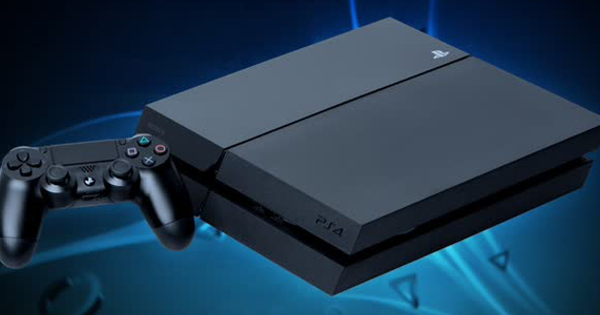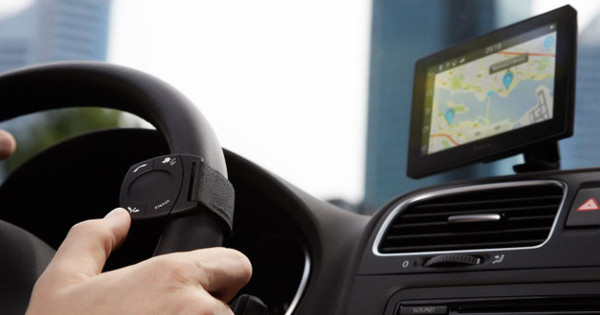The Moto G series from Motorola has been the best choice for years if you are looking for a good smartphone for a wallet-friendly price. This latest Motorola Moto G7 Plus is also a good choice, but you have to make a few concessions. Which? You can read that in this Moto G7 Plus review.
Price € 299,-Colors red and blue
OS Android 9.0
Screen 6.2 inch LCD (2270 x 1080)
Processor 1.8GHz octa-core (Snapdragon 636)
RAM 4GB
Storage 64GB (expandable)
Battery 3,000 mAh
Camera 16 and 5 megapixels (rear), 8 megapixels (front)
Connectivity 4G (LTE), Bluetooth 5.0, Wi-Fi, GPS, NFC
Format 15.7 x 7.5 x 0.8 cm
Weight 176 grams
Website www.motorola.com 8 Score 80
- Pros
- Great camera
- Luxurious appearance
- Good value for money
- Clean Android Version
- Negatives
- Update policy could be better
- Vulnerable housing
The Motorola Moto G7 Plus is the top model from the Moto G series. This series follows the Moto G6 series, which appeared in 2018. Striking from this G6 series was that the Moto G6 made significant concessions compared to the Moto G6 Plus. The Plus version had better performance, a better camera, a better screen and a slightly larger size. Motorola has worked hard in the G7 series to narrow down the differences between the Moto G7 and this Moto G7 Plus. The size and the luxurious housing have remained the same. This housing is not waterproof by the way. Furthermore, the G7 Plus version again has a slightly faster chipset, slightly better camera and a slightly better screen. But the differences are less noticeable than with the G6 series. Last year the advice was to always invest a few tens more in the Plus version. It doesn't matter with the G7 series. The G7 is an excellent base, which you can expand with this G7 Plus with slightly better cameras, performance and a 27 W fast charger.


Value for your money
The Motorola Moto G7 Plus costs 300 euros, a few tens more than the regular G7. This makes the price-quality ratio simply excellent. The Moto G7 Plus looks incredibly luxurious, thanks to a glass housing and the front with a large 6.3-inch screen with thin edges and drop-shaped screen notch. Secretly I also have a soft spot for the red version that we got to test. A nice detail is that the fingerprint scanner on the back is incorporated in the Motorola logo. The round camera island makes the smartphone recognizable as a Moto smartphone, but does protrude a bit from the housing. Admittedly, with the Moto G6 smartphones, this was worse. Yet it is not a smartphone that you use without a case because of the camera that protrudes from the housing and the glass housing that attracts fingerprints.
Not only the outside makes you suspect that you have a smartphone of around 600 euros in your hands. The inside is also fine: the Snapdragon 636 chipset with 4GB does not break any speed records, but for this price range they are perfectly fine for the most important tasks of your smartphone. The battery capacity of 3,000 mAh is enough to get through the day. But not much more.
Big screen
The Moto G7 Plus has the same screen panel as the Moto G7: a 6.2-inch screen with a full HD resolution. As with other modern smartphones, Motorola uses a teardrop-shaped notch, thin screen edges and a different aspect ratio. In this case of 19 by 9. The image quality is perfectly fine: the screen looks clear and the colors come out nice… But something strange is going on. Our test version of the Moto G7 Plus had a lower image quality than the regular Moto G7 that is on the test bench. Our Moto G7 Plus had a somewhat grayer image and a less good viewing angle. That's strange. Because inquiries taught me that it really concerns the same screen panels. We may have received a different device, but it could also be that the image quality varies per device.

Moto G7 Plus camera
At the back of the Moto G7 Plus is a dualcam. Unfortunately, this cannot be used for advanced features such as zooming without loss of quality. The second camera lens is purely intended for depth perception, which is again applied in, for example, portrait mode (where a depth of field effect is used), crops and spot color (which makes a monochrome photo, with the exception of one color that you enter yourself). Nevertheless, such a second lens always feels a bit redundant if it does not offer a zoom function. Google can also perform the options I just mentioned in software with a single lens on the back of the Pixel smartphone.




In difficult lighting conditions, you soon notice that the Moto G7 Plus (left) is able to capture better photos.
The main lens is capable of shooting good photos. Smartphones in the same price range often show much grayer photos than this Moto G7 Plus. That is also the difference between the G7 and G7 Plus. Anyone looking for a decent camera in a budget smartphone is better off investing those few extra bucks in the Plus version, because especially when the lighting conditions become more difficult, you notice the difference clearly. The Moto G7 Plus shoots vivid photos, where the dynamic range is large enough to display both dark and light surfaces reasonably clearly in a photo. Of course, the Moto G7 with its photos does not come close to the most expensive Huawei, Samsung or Apple smartphone. But nevertheless, the photos you shoot with the G7 Plus are perfectly fine.
Android 9.0 with Motosaus
In addition to the performance and the better cameras, the G7 Plus is equal to the Moto G7. Appearance, build quality, but also the software. The Motorolas run on Android 9 (Pie), with a Motorola sauce. Additions are, for example, Moto Actions, where you conveniently operate the smartphone. For example, by turning on the flashlight by shaking the smartphone or starting the camera with a wrist movement. Motorola is an example for many manufacturers, by not changing things too drastically in Android, just providing the most recent Android version on the smartphone and being clear about the update policy. Still, Motorola leaves some stitches in the software area. The update policy could be better: you get one major version update and two years of security patches. Many other budget smartphones run on Android One and therefore look forward to better support.



Alternatives to the Moto G7 Plus
While the Moto G7 Plus is one of the best budget smartphones, there are plenty of alternatives. Of course there is the Moto G7, which scores slightly less in terms of camera and performance, but is a bit cheaper. But Xiaomi's Pocophone F1 is also an interesting alternative for about the same price. In terms of performance, this smartphone runs around the Moto G7 Plus, only the Pocophone cannot match the Android version of Motorola. If you are looking for the best that Android has to offer, it is better to look for an Android One smartphone in the same price range, such as the Nokia 6.1 and Nokia 7.1.
Conclusion: Buy Motorola Moto G7 Plus?
As with the previous generations of the Moto G series, the Moto G7 Plus is the best budget smartphone money can buy. The smartphone looks luxurious and modern and the device simply has no major drawbacks. That said, there is more and more serious competition, in terms of better performing smartphones and smartphones with better Android support. The differences between the regular Moto G7 and Plus version are also less significant.

